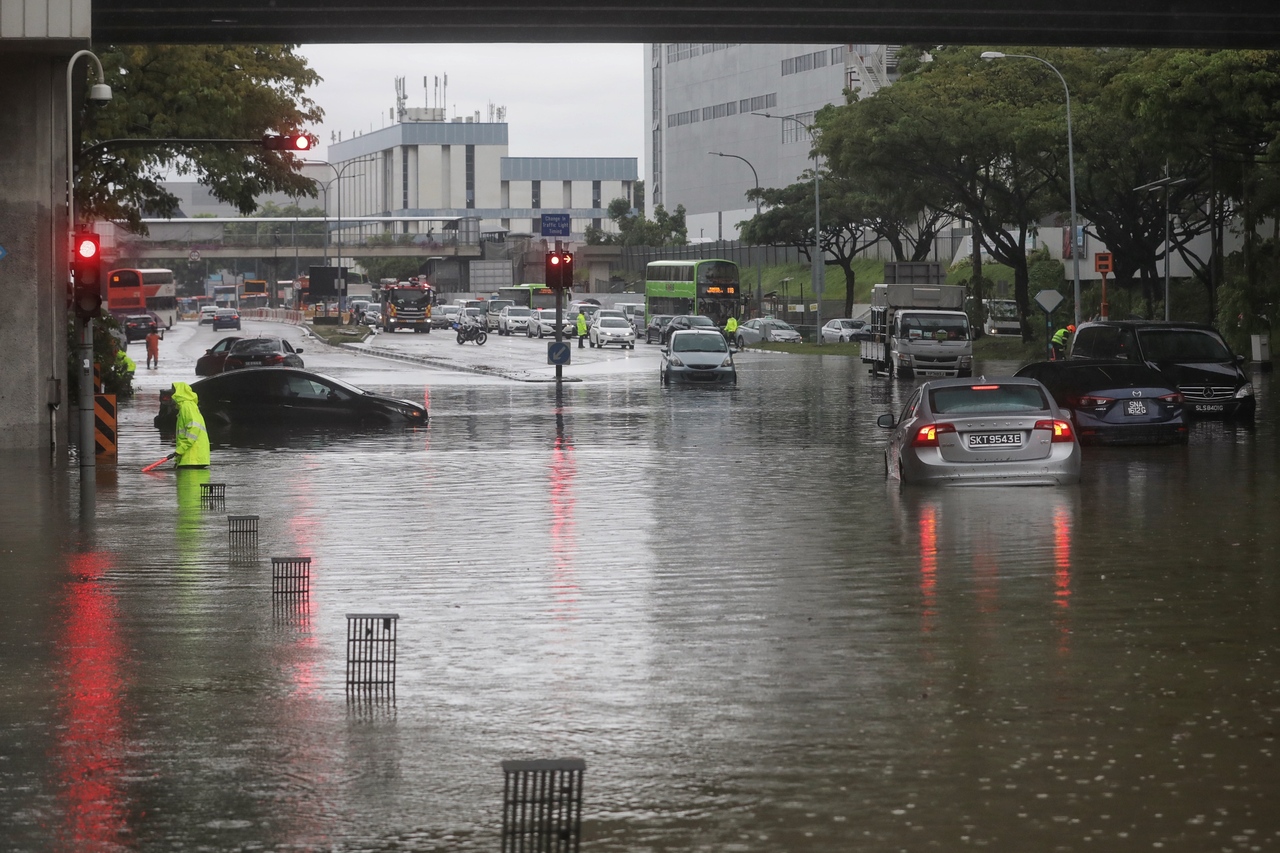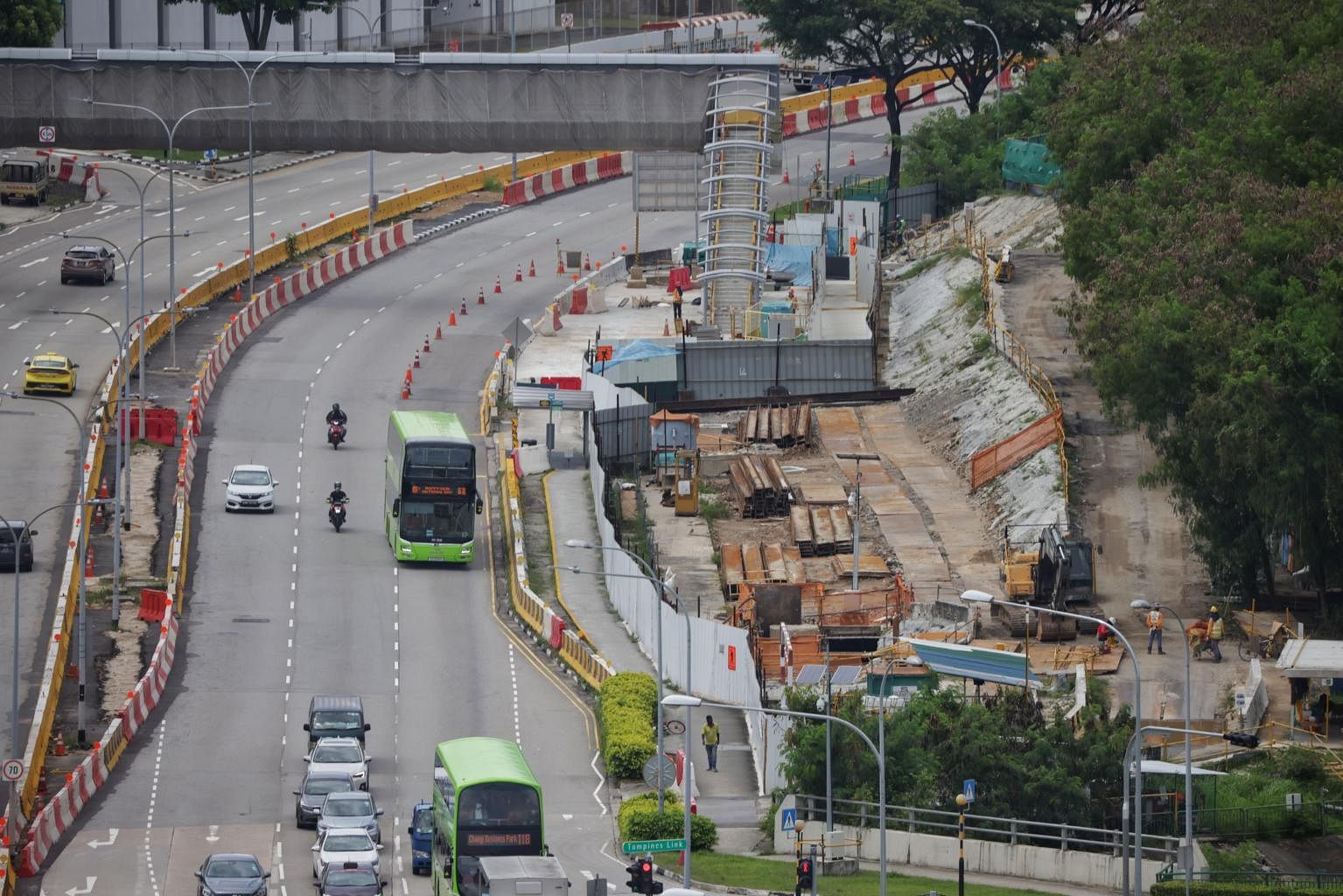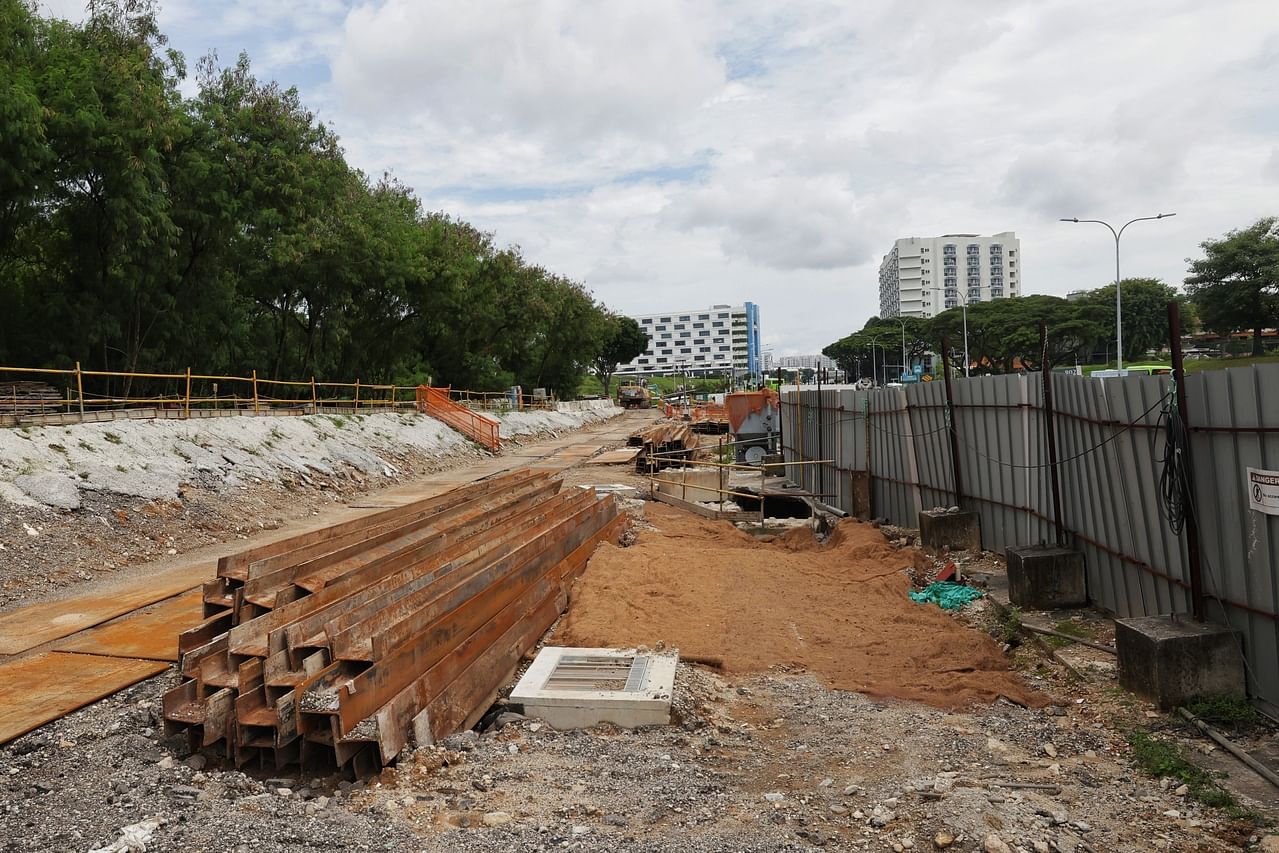Construction firm Samwoh to face charges for unauthorised drainage works that caused Pasir Ris flood
Sign up now: Get ST's newsletters delivered to your inbox

Samwoh's actions led to a flood that stranded cars and motorists for almost two hours on Aug 20, 2021.
ST PHOTO: KEVIN LIM
Follow topic:
SINGAPORE - National water agency PUB will be taking action against construction firm Samwoh for unauthorised drainage works that caused a prolonged flood in Pasir Ris last month.
The junction of Tampines Avenue 10 and Pasir Ris Drive 12 is not flood-prone, but Samwoh's actions led to a flood that stranded cars and motorists for almost two hours on Aug 20, PUB said on Saturday (Sept 11).
It will be filing charges against Samwoh under the Sewerage and Drainage Act. Those found guilty may be fined up to $50,000 for works affecting the storm-water drainage system, and up to $20,000 for unauthorised alteration of the system.
A 200m section of the traffic junction was affected, with knee-high water in some places. Thirteen vehicles were partially submerged and several motorists required help to evacuate their vehicles. At least one person was taken to hospital.
The flood persisted for almost two hours - an unusually long event, as most flash floods in Singapore subside within about 30 minutes.
PUB said in a statement that the drainage system there was "more than adequate to cope with the rainfall intensity" on that day.
Water is channelled to Sungei Api Api, a canal about 1km from the flooded junction, and sensors showed that it was only about 50 per cent full on Aug 20.
The amount of rain then was also comparable to recent rain events on April 5 this year and Nov 22 last year. No flooding was observed during the past two occasions.
Other areas that experienced flash floods last month (August), such as Dunearn Road, are historically flood-prone sites where drainage systems are often overwhelmed during bouts of heavy rain. Work is ongoing in Bukit Timah to expand the drainage capacity and raise the road levels in the interim.
Mr Yeo Keng Soon, director of PUB's catchment and waterways department, said of the Pasir Ris incident: "This prolonged flooding was entirely man-made. It would not have happened if the contractor had complied with PUB's regulations for drainage work."
Chain of events
PUB investigations showed that Samwoh, which is carrying out road widening along Tampines Avenue 10, had built a diversion drain that was meant to reconnect to the original drain further downstream.
But there were multiple issues with the plan, which resulted in the Aug 20 flood.
The contractor first blocked off the existing roadside drain - which has a width of 1.8m and a height of 3m - with large concrete slabs.

The diversion drain was not properly connected to the existing drain and partially obstructed by scaffolding, PUB said.
Samwoh had not sought the agency's approval for drainage diversion.
The unauthorised drainage works impeded the discharge of rainwater into the downstream Sungei Api Api, resulting in floodwater accumulating at the traffic junction as it is the lowest point in the vicinity, PUB said.
Samwoh was subsequently instructed by PUB to rectify the situation and remove all obstructions to ensure storm water can flow in the drain.
On Aug 20, PUB first alerted the public to a flood at the Pasir Ris junction at 7.58am. While heavy rain in the area had stopped by around 9am, the flooding persisted and the water fully subsided only at 9.40am.
A check via the Land Transport Authority's OneMotoring website showed that the Samwoh project involves the widening of Tampines Avenue 10 to a dual four-lane carriageway with a bus lane in each direction. Work is expected to be completed by the fourth quarter of next year (2022).
Mr Lee Cai Jie, chief engineer for drainage operations at PUB's catchment and waterways department, explained during a media briefing on Friday (Sept 10) that when a road is widened, affected sections of the roadside drain would have to be reconstructed.
But contractors must seek approval from PUB before starting any drainage works, he said. The submission should include a Drainage Detailed Plan, which in Samwoh's case would set out the proposed scope of drainage works, such as the proposed alignment and sizing of the new drain, said Mr Lee.
If this is approved, PUB will issue a clearance certificate which stipulates that, prior to carrying out works to alter the existing drainage system, the contractor must also submit a method statement to propose how and when the drain will be constructed.
Said Mr Lee: "Samwoh had submitted the Drainage Detailed Plan and obtained approval from PUB. But they failed to follow up with the method statement for PUB's approval before proceeding with the drainage modification works at its worksite."

The site where road works are currently being carried out by construction contractor Samwoh Corporation.
ST PHOTO: KEVIN LIM
The last time that enforcement action was taken against a contractor for obstructing drainage systems under the Sewerage and Drainage Act was in 2017.
Construction company Sato Kogyo was fined a total of $14,000 for causing floods in the Thomson area on Christmas Eve in 2016, when several eateries experienced knee-deep water levels after a downpour.
The firm was slapped with a penalty of $8,000 for altering the public drainage system across Upper Thomson Road near Lorong Mega without PUB's approval. It was fined another $6,000 for constructing a temporary diversion drain along Jalan Keli, opposite Thomson Plaza, without notifying PUB.
PUB's Mr Yeo said on Saturday (Sept 11) that the agency maintains a network of roadside drains, canals and rivers that convey storm water into reservoirs or out to sea.
He added: "It is imperative that our drains are kept free flowing, especially as we experience more frequent and intense rainfall due to climate change. This incident should serve as a stark warning to all contractors that any construction works carried out must not adversely affect the storm water."
While the climate change fingerprint is not yet clear in local rainfall patterns, scientists have warned that a warming atmosphere can hold more water, resulting in bouts of more intense storms.
Heavier-than-usual rain experienced in Singapore since last month (August) was due to a confluence of weather systems dumping rain over the island.
These include the Madden-Julian Oscillation - a moving pulse of rain clouds that usually move eastwards over the equator every 30 to 60 days. When the band of rain clouds makes an appearance in Singapore, the country experiences more rain.
At the same time, the effects of another climate phenomenon, known as the Indian Ocean Dipole (IOD), are also being felt here. The IOD is now in its negative phase, with changes in sea surface temperature and winds over the Indian Ocean bringing more rain over Singapore.
The current negative phase of the IOD is expected to persist till next month (October).


